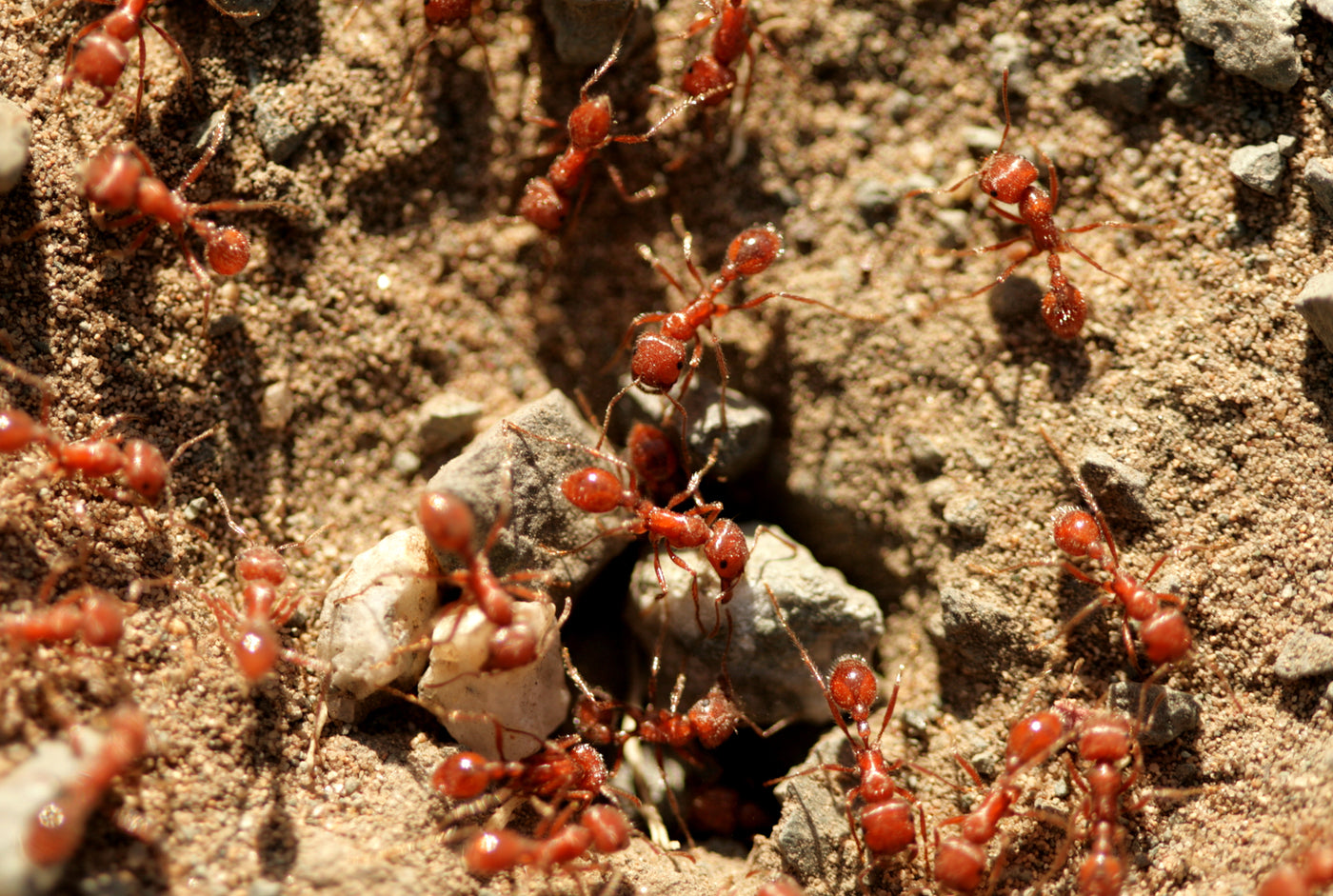Your Cart is Empty

Appearance and Identification: Fire ants, known scientifically as Solenopsis invicta, are notorious for their aggressive behavior and their ability to deliver painful stings. They are typically reddish-brown in color and range in size from 1/8 to 1/4 inch. One of their distinctive features is their unevenly sized antennae segments.
Behavior and Nesting: Fire ants are highly territorial and are known to defend their nests aggressively. They construct large, dome-shaped mounds that can reach impressive heights. These mounds often contain intricate tunnel systems that provide the colony with protection and temperature regulation. When their nest is threatened, fire ants swarm out in large numbers, delivering painful stings to deter intruders.
Sting and Venom: The fiery sting of a fire ant is caused by the venom injected through a sharp sting at the rear of their abdomen. Their stings can cause intense pain, itching, and even allergic reactions in some individuals. Fire ants are known for their tenacity, as they can repeatedly sting their victims.
Appearance and Identification: Red ants encompass a variety of ant species, making it a broader category than fire ants. They can vary in size, shape, and color. Some species of red ants have a reddish-brown hue, while others may have a darker appearance.
Behavior and Nesting: Red ants are highly adaptable and can be found in a wide range of habitats, from forests to urban environments. They are known for their diligence in collecting food and maintaining their nests. Their nests can be found in soil, rotting wood, or even within crevices in buildings.
Sting and Defense: While red ants generally have a less potent sting than fire ants, some species can still deliver painful bites when they feel threatened. They often bite to defend their nests and themselves. The irritation caused by red ant bites can vary from mild discomfort to itching and swelling.
Both fire ants and red ants are highly successful in their habitats, but they also have significant impacts on their ecosystems. Fire ants, especially when introduced to non-native areas, can outcompete local ant species, disrupt ecological balances, and pose threats to agriculture and wildlife. Red ants, on the other hand, play vital roles in ecosystem processes such as soil aeration, pest control, and nutrient cycling.
Conclusion: In the showdown between fire ants and red ants, both sides exhibit remarkable adaptations for survival. While fire ants boast an aggressive nature and painful stings, red ants showcase their versatility and persistence. Understanding the distinctions between these tiny warriors allows us to appreciate the complexity of the insect world and the critical roles ants play in maintaining ecological harmony. So, the next time you encounter an ant, whether it's a fire ant or a red ant, take a moment to marvel at their remarkable lives and the dynamic ecosystems they influence.